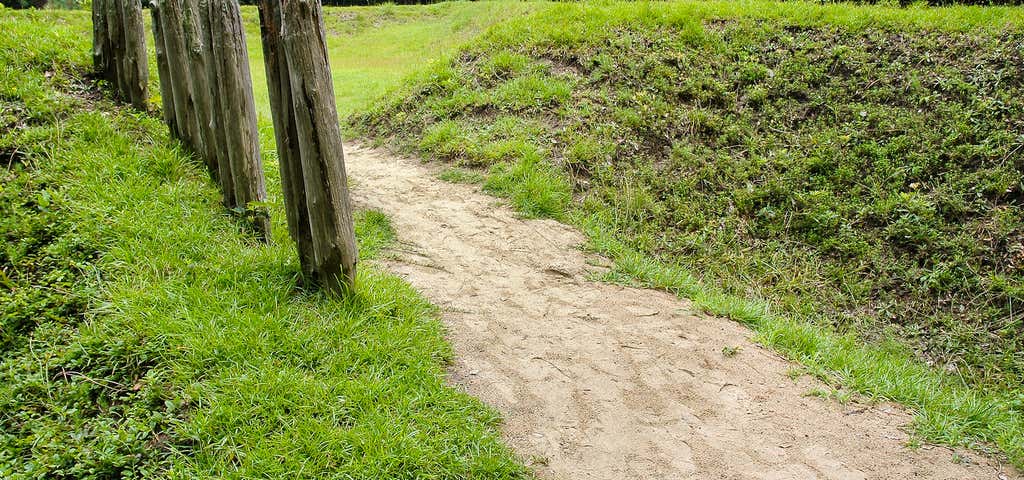The Lost Colony of Roanoke is one of the biggest mysteries in American history. Over 100 men, women and children, along with their entire village, vanished without a trace from a island over 400 years ago. The lack of clues is astonishing, and the only hint left behind further confounds: the word "Croatoan" carved onto a tree. It seemingly pointed to a nearby Native American tribe, but there's not a drop of evidence that the colonists ever sought refuge with them.
Were they kidnapped? Did something terrible cause them to flee? Or perhaps they were slaughtered in some kind of massacre? Hundreds of years of speculation haven't turned up any new clues, or any solid theories, only wild conjectures. It's even inspired a whole season of American Horror Story. But if you're more interested in uncovering what really happened to the settlers, you can visit the site where the colony disappeared from and hunt for clues to form your own opinion.
First, it helps to have a little background info on what exactly happened. The colony of Roanoke was established by Sir Walter Raleigh (whose Wikipedia page describes him as a "landed gentleman, writer, poet, soldier, politician, courtier, spy and explorer") in 1587. The colony consisted of 90 men, 17 women and 11 children, all from England, who were ready to establish a village on Roanoke Island in what is now North Carolina. Between being far away from home and supplies, and the contentious relationship with the Croatoan tribe who also lived on the island, it was a risky task. In fact, when the colonists arrived, they found that the skeletal remains of the British garrison left on the island from an earlier expedition, which understandably freaked them out. They tried to abandon the plan to colonize, but the ship's captain refused to let them back on the ship. As things grew even more tense with the Croatoans, the colonists begged their leader John White to go back to England and bring more colonists and supplies. He set sail for the Motherland, promising to return as soon as possible with help.
Things didn't exactly work out. White didn't want to immediately sail back to America once he got to England, since winter was setting in, and screw long ocean voyages during stormy, cold weather. But, shortly after that, the Anglo-Spanish War happened, and it required that every able British ship take arms against the Spanish and their formidable Armada. After the English finally bested the Spanish, White was able to turn his attention back to his colonists... but when it was all said and done, it was three years before White could return to Roanoke with supplies. To his surprise, when he arrived, he found nothing. Nada. Zippo. The colonists were gone, and had totally disassembled their village. The only clue? The word "Croatoan" carved on a nearby tree. No remains or descendants were ever found.
Theories on what happened to the disappeared colony run the gamut. Many believe that the colonists carved "Croatoan" on the tree as a sign that they were moving to nearby Croatoan Island (now Hatteras Island). Some think they were slaughtered by hostile tribes, or by the Spanish, but the most likely explanation is that the colonists simply integrated themselves into another tribe. They took the time to disassemble the village, and no bodies were ever found nearby, so we have to assume that the colonists voluntarily left at some point... but why? And where did they go? And what happened to them after they left?
Even to this day, no one is quite sure what exactly happened at Roanoke. Archaeologists, geneticists, historians, and conspiracy theorists all have different ideas on what happened to the colony... and new theories are still being tossed out.


Photo Credit: Flickr/Ken Lund
Fort Raleigh National Historic Site preserves the spot where the colony of Roanoke was established. You can see the earthworks, which are all that remain of the fort established by the colonists, along with some artifacts excavated from around the site, which historians think belonged to the colonists. The visitor center has informational exhibits and films, and displays some of the artifacts. Here, you'll also learn about the site's more recent history (well, comparatively recent) as Freedman's Camp, a self-sustaining settlement of free African-Americans in 1863.
You'll also find a memorial to the first English child born on American soil, Virginia Dare, the granddaughter of John White. She, along with her parents, were among the lost colonists. The historic site also has a sunken Elizabethan garden made in memorial of the lost colonists, lots of hiking trails, and the Waterside Theater, where a dramatic retelling of the story of the Lost Colony is performed regularly, and has been since the late 1930s.
If you're traveling with kids, or you're looking for a more immersive and interactive look at the story of the Lost Colony, head to Roanoke Island Festival Park. They have a recreation of the 16th century ship Elizabeth II, an Indian village, a colony settlement, costumed interpreters, and a super hands-on museum. Ask the actors what they think happened to the colony, and let your imagination run wild!
At this point, it kinda seems like we'll never know what happened at Roanoke. Even using DNA to find out if the colonists incorporated themselves into another tribe hasn't really turned up much. But, maybe if you keep your eyes peeled as you explore the island, and do a little bit of digging, you might be the person who finds a clue to bust this 400 year old mystery wide open.
Roadtrippers
Roadtrippers helps you find the most epic destinations and detours—from roadside attractions to natural wonders and beyond.
Explore More Trip Guides
Offbeat guide to Kansas City, Missouri
- 10 Places
Things to do in Nashville
- 9 Places




